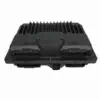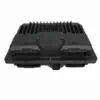Restore Peak Performance to Your GM Truck or Van
Is your trusty 1998-1999 GM vehicle suffering from frustrating issues like a persistent check engine light, poor fuel economy, rough idling, or even a no-start condition? These are classic signs of a failing Powertrain Control Module (PCM), the central computer that manages your engine and transmission. A faulty PCM can disrupt everything from fuel delivery and spark timing to transmission shift points, leaving your vehicle unreliable and inefficient. Don’t let a bad module sideline your workhorse. This genuine, used OEM PCM is the reliable and cost-effective solution to get you back on the road with confidence.
From the Diagnostic Bay
I once had a ’99 Suburban towed in that had its owner chasing his tail for weeks. The truck would crank but wouldn’t start, and it had already been through two fuel pumps and a new ignition coil. The owner was convinced the PCM was fried. Before swapping it out, I did a quick voltage drop test on the main ground wires from the battery to the engine block and frame. Sure enough, the frame ground bolt was corroded and barely making contact. After cleaning the connection, the truck fired right up. It’s a crucial reminder: always verify your main power and ground connections are clean and tight before condemning a PCM. A five-minute check can save you hundreds of dollars.
Is Your Vehicle Showing Signs of a Failing PCM?
A failing PCM can manifest in various ways, often mimicking other component failures. If you’re experiencing any of the following, your engine’s computer may be the culprit:
- ✔ Persistent Check Engine Light (CEL) with communication-related trouble codes (e.g., U-codes) or multiple false sensor codes.
- ✔ Engine cranks but refuses to start, despite having fuel and spark.
- ✔ Unexplained stalling or hesitation during acceleration.
- ✔ Rough, erratic, or surging idle.
- ✔ Noticeable decrease in fuel efficiency.
- ✔ Harsh or incorrect automatic transmission shifting.
- ✔ Failure to pass an emissions test.
The Direct-Fit Solution: A Programmed 1998-1999 Chevrolet 3500 PCM
Replacing the PCM on these vehicles isn’t just about swapping a box. It requires precise programming to match your vehicle’s specific configuration. We take all the guesswork and hassle out of the process. When you order from us, you’re not just getting a part; you’re getting a complete, ready-to-install solution. We use your vehicle’s Vehicle Identification Number (VIN) to flash the module with the latest, most stable software updates directly from General Motors. This ensures that your engine and transmission operate exactly as the manufacturer intended, often correcting factory bugs and improving overall drivability.
This unit is a genuine OEM part sourced from a salvaged vehicle, guaranteeing perfect fitment and compatibility with your existing wiring harnesses and sensors. Each module is thoroughly inspected and tested to ensure it’s ready for service. This is a direct replacement for several part numbers, including: 09355699, 16266645, 9355699, 16250279, 16258815, 09366810, and 9366810.
While this part is listed for the 1998-1999 Chevrolet 3500 PCM, it also fits a wide array of other GM trucks and vans from that era, such as the Chevrolet/GMC 1500 & 2500 Pickups, Tahoe, Yukon, Suburban, Express, Savana, and more. Please verify your part number and consult the detailed fitment list to confirm compatibility.
Installation Note
Once installed, some vehicles may require a Crankshaft Variation Relearn procedure (also known as a CASE relearn) to prevent a P1336 trouble code. This procedure can be performed by most professional scan tools and is a standard part of replacing a PCM on these GM vehicles. This synchronizes the new module with your engine’s crankshaft position sensor for accurate ignition timing.
Frequently Asked Questions
Why do you need my VIN?
Your Vehicle Identification Number (VIN) is essential because it contains specific information about your truck’s engine, transmission, emissions system, and other options. We use the VIN to load the exact GM-certified software for your vehicle, ensuring a seamless, plug-and-play installation.
Is this part difficult to install?
Physically, the installation is straightforward. The PCM is typically located in the engine compartment and is held in place by a few bolts and has several electrical connectors. The most important part is disconnecting the battery before you begin. The programming we perform beforehand eliminates the need for expensive dealer tools for initial setup.
Will I need to do anything else after installation?
In many cases, the vehicle will start and run correctly immediately. However, some vehicles may require a Crankshaft Variation Relearn (CASE relearn) to be performed with a capable scan tool to clear certain trouble codes and ensure optimal performance.
What is the difference between a PCM and an ECM?
The terms are often used interchangeably. ECM stands for Engine Control Module, while PCM stands for Powertrain Control Module. A PCM controls both the engine and the transmission, which is the case for this particular module.
Is this a new part?
No, this is a high-quality, tested, and fully functional used OEM part that has been sourced from a salvaged vehicle. We ensure its reliability and then program it to be a perfect match for your vehicle.


